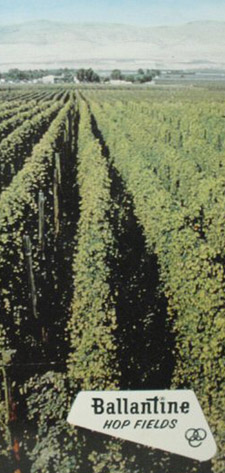 Enough about session beers, at least for the moment. Let’s get back to hops.
Enough about session beers, at least for the moment. Let’s get back to hops.
Jay Brooks has the results of the Bistro’s 7th (yes, seventh, this is no fad) Double IPA Festival in Hayward, Calif.
The winner was Dorado Double IPA from Ballast Point Point Brewing, an old friend. We go back to when it was called Crystal Pier and was already winning at the Bistro’s festival.
In 2003 the guys at Ballast were nice enough to put some of Cyrstal Pier into 22-ounce bottles (they sold it only on draft) and ship it to New Mexico. The American Society of Brewing Chemists gathered in a resort north of Albuquerque for their annual convention and I helped Mitch Steele – then of Anheuser-Busch, now with Stone Brewing – round up beers for a seminar on styles.
At that time almost none of the 30-plus brewing industry employees in the room had ever had an “Imperial IPA” (or were ready for other beers like New Belgium’s La Foile and Cuvee de Tomme).
It was an eye-opening experience for me. These guys (meaning men and women) are focused. Many worked for the world’s largest brewers or companies that supply them. They are worried about shelf life, foam stability, stuff like that. No detail is too minute. And they can spot off flavors, and tell you why they are there, at perhaps three miles away.
We asked them to provide comments about the beers they tasted and I just drug those out of a file. I started out looking only at the Ballast Point beer, and that’s all I’ll write about today, but soon was reading more. Within the week I’ll post more notes about some of the other beers.
Only seven of the 28 who left comments said they’d buy Cyrstal Pier in a store.
One wrote: “Tongue scraper requested. Malt is still good.”
On the other side (and I know this was from somebody who worked in packaging at A-B): “Multitudes of flavor! Awesome – I love this new style.”
Maybe my favorite: “‘Savage’ flavor but not taste. Hoppy. Hoppy. Hop. Hop.”
You get the point.
 Enough about session beers, at least for the moment. Let’s get back to hops.
Enough about session beers, at least for the moment. Let’s get back to hops. But I will write that one thing I want it to mean is that context makes a difference. Before you fire off another what the heck question, look at the contest Alan McLeod has invented at
But I will write that one thing I want it to mean is that context makes a difference. Before you fire off another what the heck question, look at the contest Alan McLeod has invented at